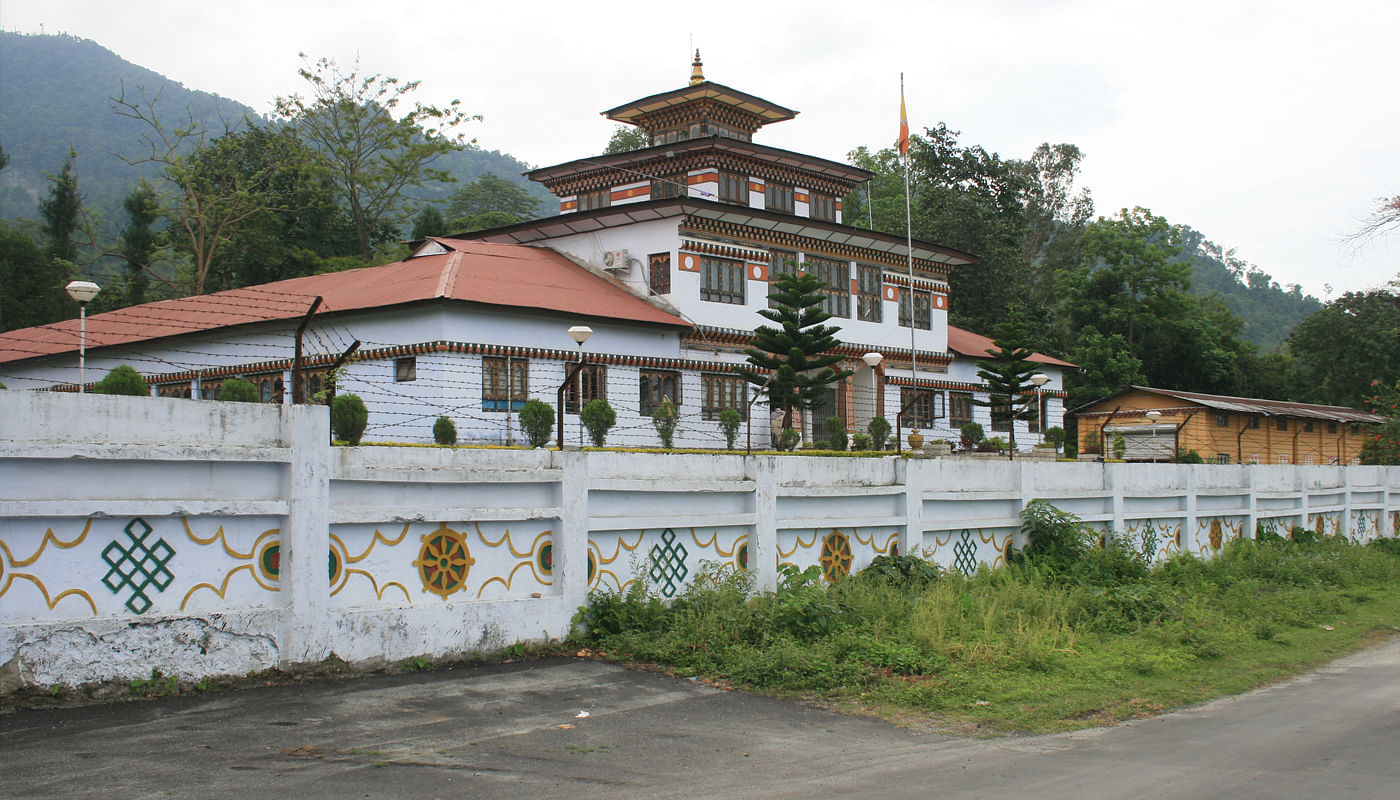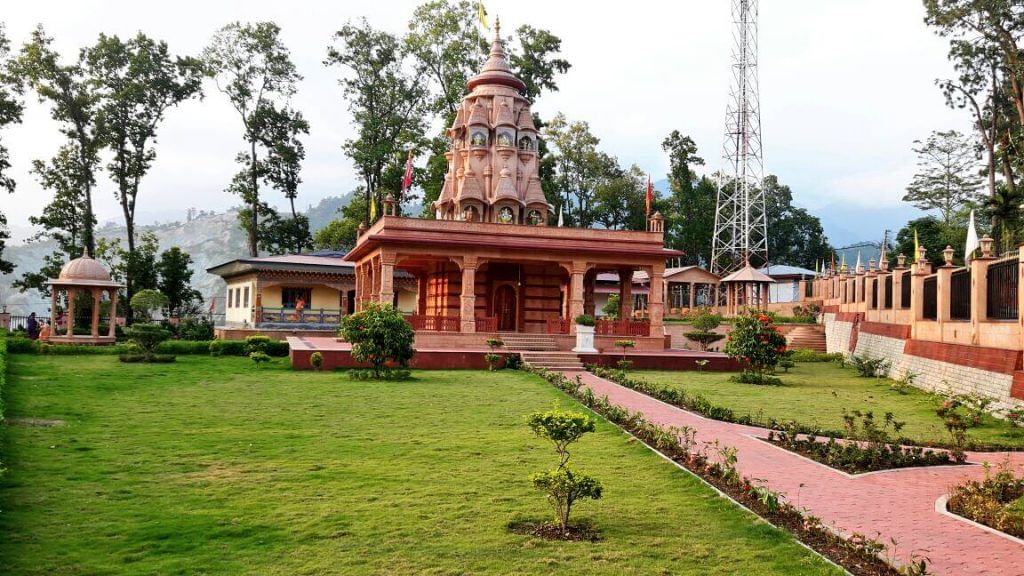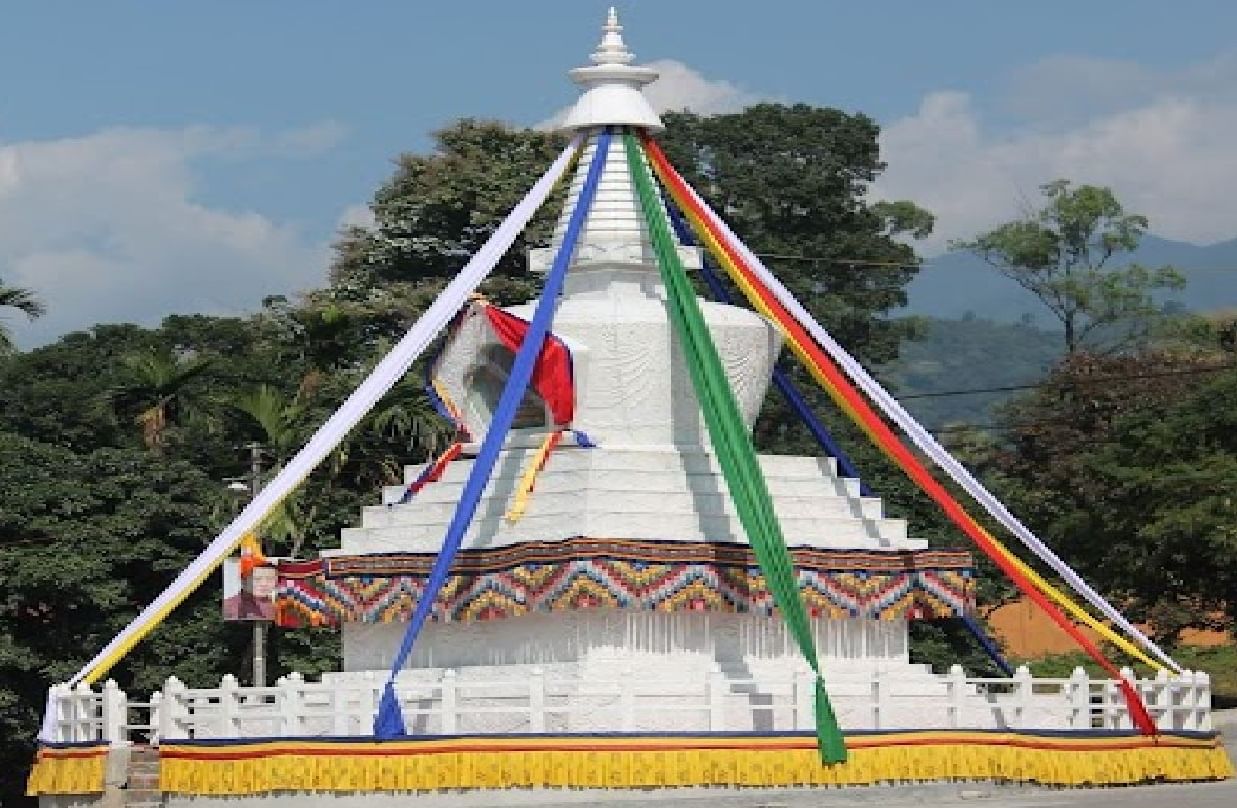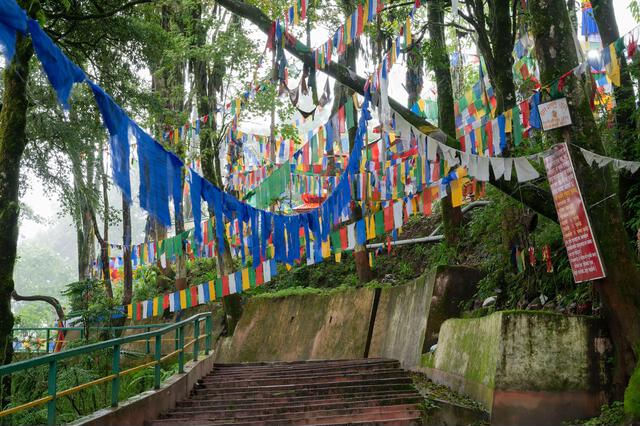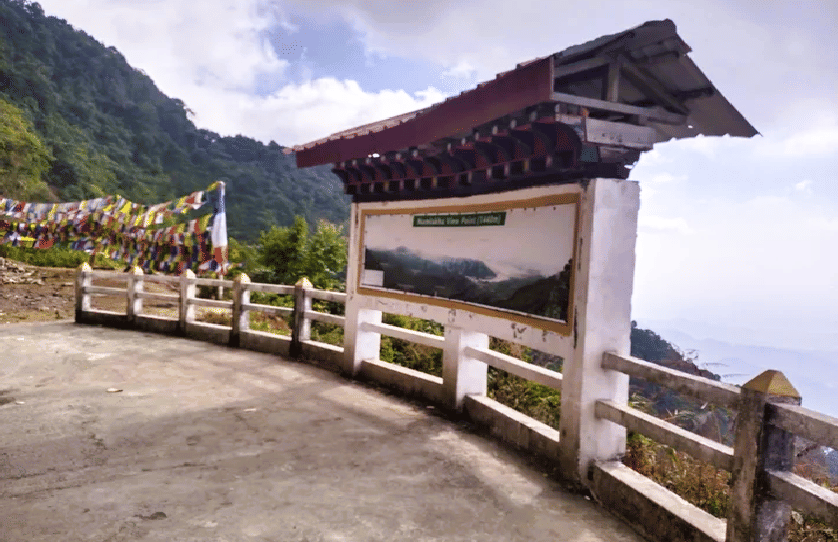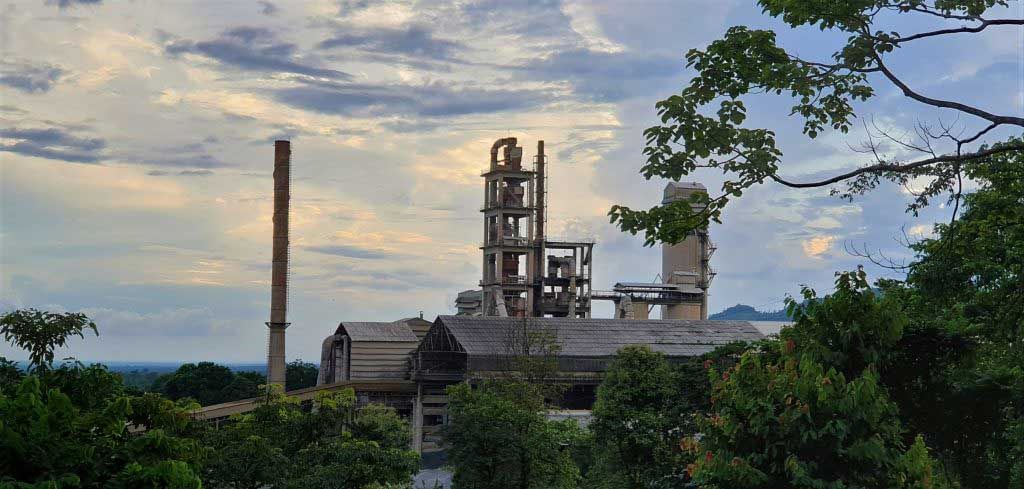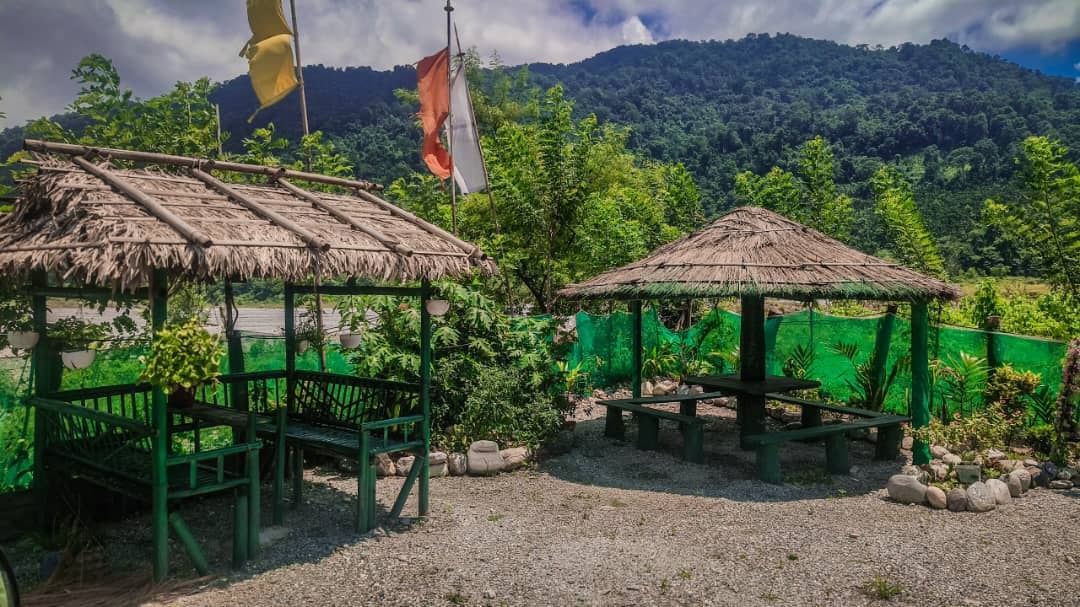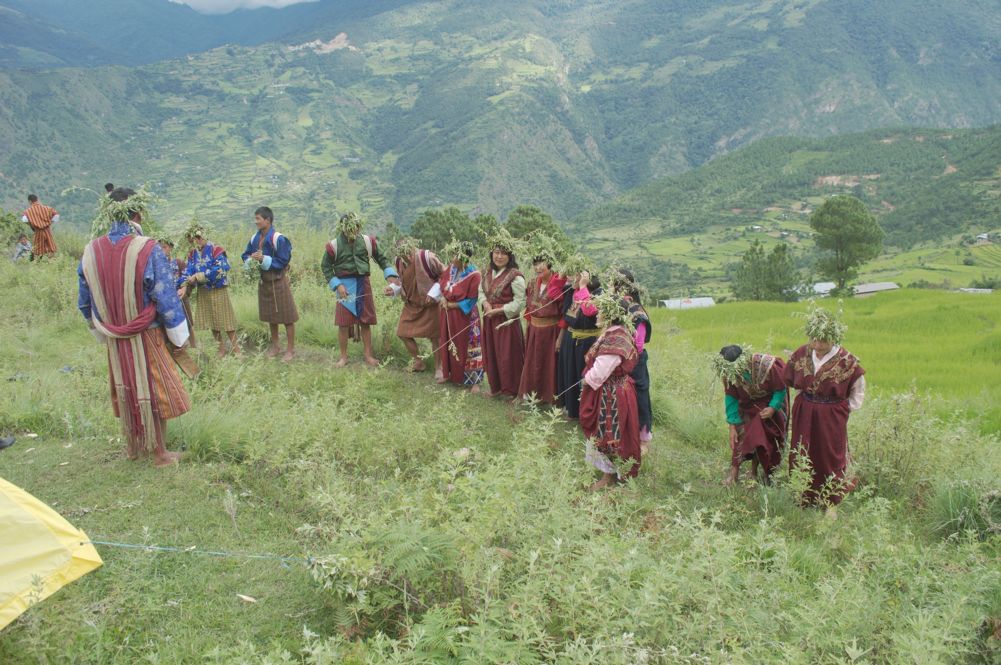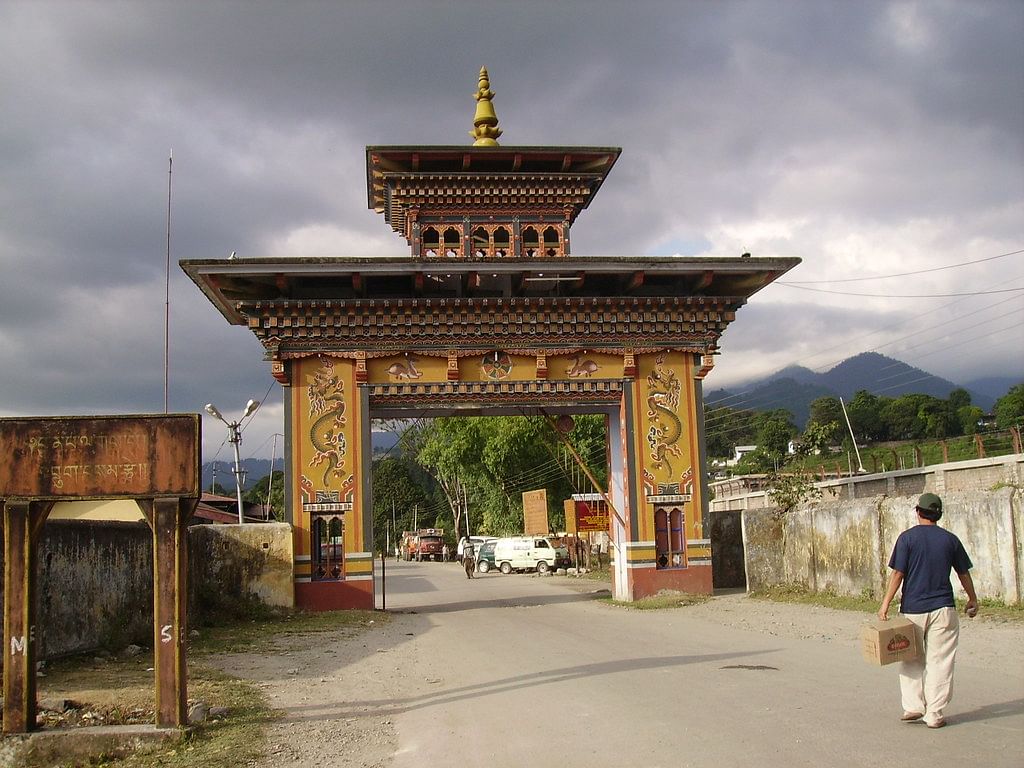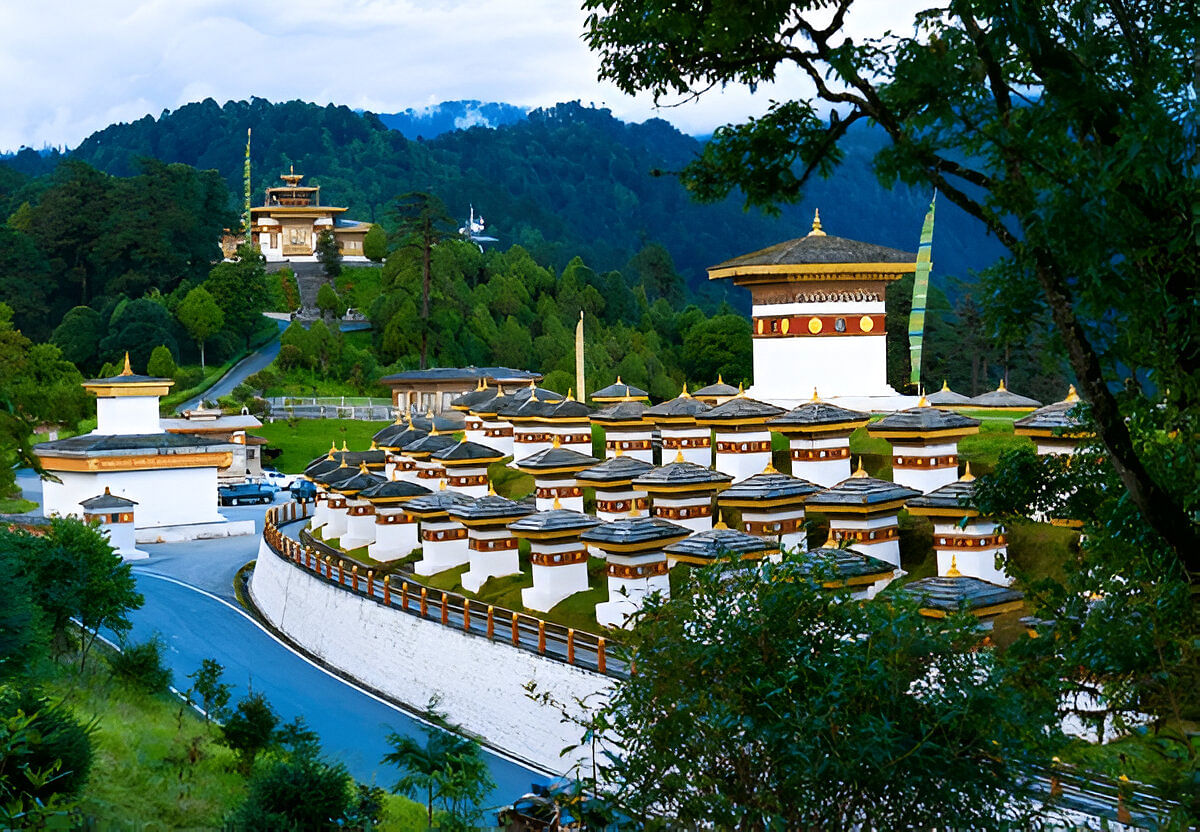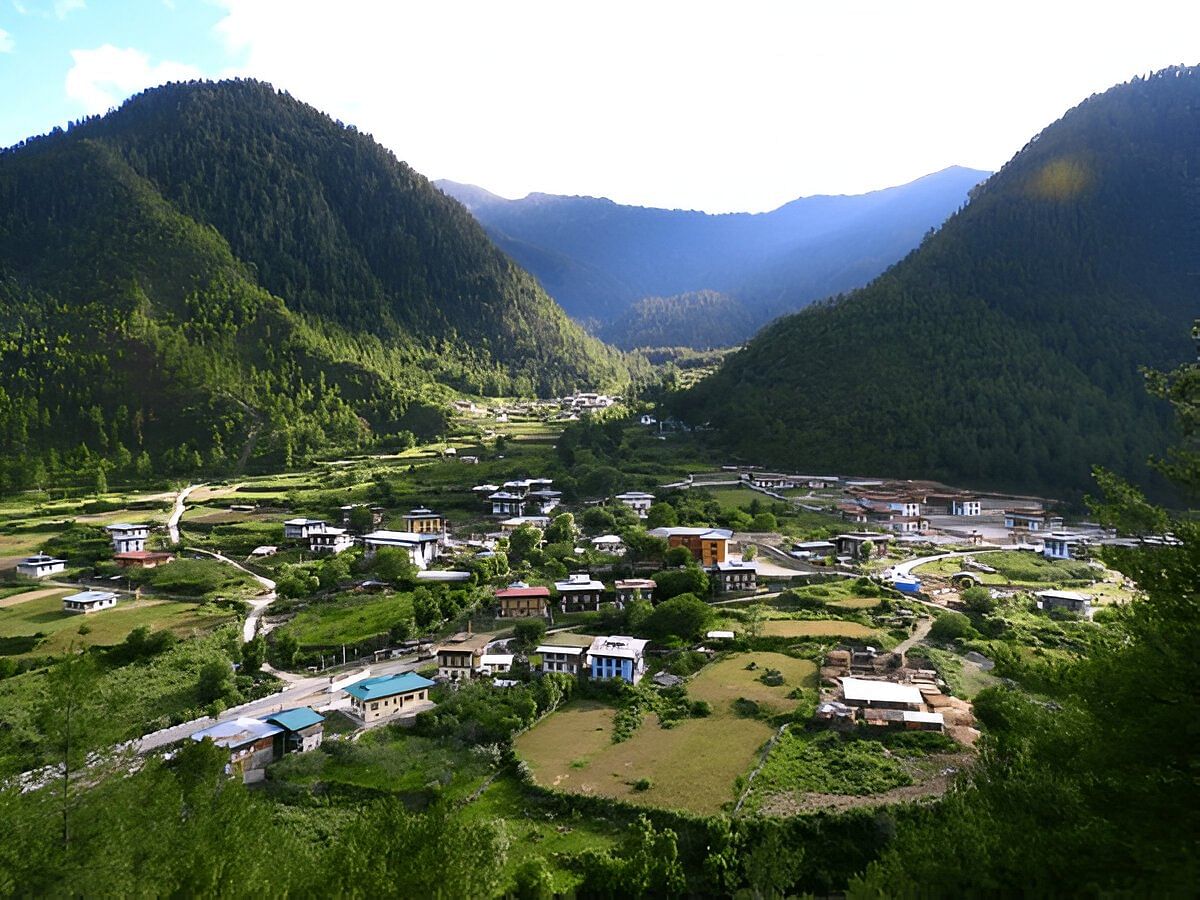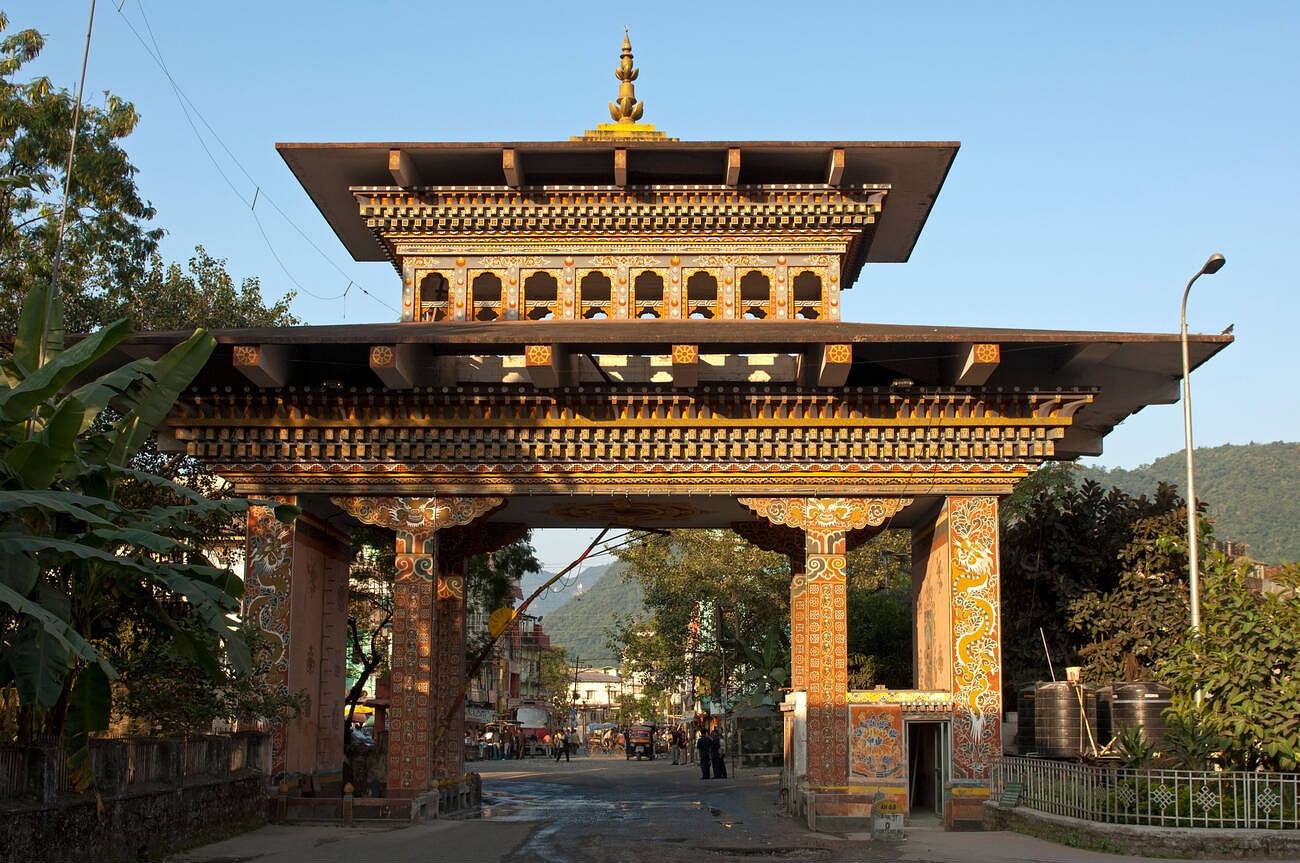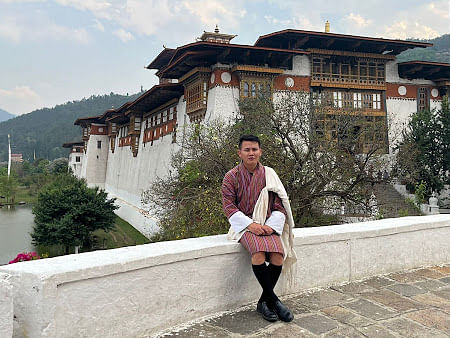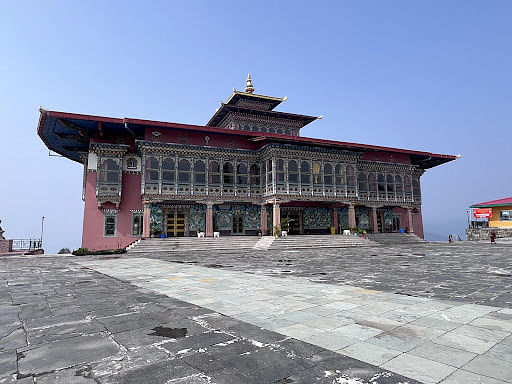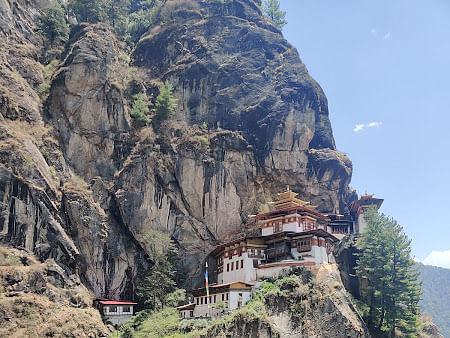Samtse is a tiny town along the Indian border that hardly anybody mentions in travel guides for Bhutan. Nobody really knows of it, and tour operators tend to just skip right past it. The Places to visit in Samtse aren't actually tourist attractions - more like just normal places where normal things occur.
There's a temple or two here and there. A local market where people buy vegetables and rice. Orange orchards all over because the climate's good for them. Since Samtse sits pretty low compared to the rest of Bhutan, breathing isn't a problem. No altitude headaches or feeling worn out from thin air.
The whole place has a slow, quiet feel. Farmers work their land. People chat at the market. Children walk back from school. No one is looking for tourists to arrive, so there is no show or pretend smile. Just regular life happening.
When organising Things to do in Bhutan, the majority of tourists confine themselves to Paro, Thimphu, and the large monasteries in the north. Samtse falls through because there is nothing "famous" here. But for anyone tired of chasing landmarks and crowds, this town offers something different - peace and actual local life. Our Bhutan Tour Packages include this spot for people wanting that experience.
7 Best Places to Visit in Samtse for Every Traveller
1. Shivalaya Mandir (Samtse Shivalaya Mandir)
As part of Samtse tourism, this place gives you the first glimpse of everyday life in Bhutan. Shivalaya Mandir is a Hindu temple built around a sacred site where a smaller mandir used to stand. The current temple, completed in 2015, features finely carved sandstone and marble statues of Lord Shiva and other deities. It was constructed by the command of His Majesty the King, partly to commemorate both the Royal Wedding and the 60th Birth Anniversary of the Fourth Druk Gyalpo.
Location: W32V+562, Bhutan
Why it’s a must among the places to visit in Samtse:
- The temple brings together Hindu and Bhutanese styles in a way that just works. People from different religions come here, and everyone gets along. There's mutual respect, which feels rare these days.
- The carvings are really something - sandstone work, marble statues, lots of detail. Worth seeing just for how nice it looks. Takes good pictures too.
- Accessibility: It's close to town, maybe a couple of hours round trip. Won't eat up your whole day.
Tips for visiting:
- Best visited early morning or later afternoon when the light is softer.
- Check the festival calendar (especially Maha Shivaratri) if you want to see it at its most lively.
- Dress modestly. Remove shoes in sacred areas, show respect.
- Nearby vendors may have snacks or small shops, but bring water if you’re coming from more remote areas.
Also built in 2015, Sidhok Khorlo Chorten is a 30-foot-tall Buddhist stupa made of white marble. It is dedicated to the 60th Birth Anniversary of the Fourth Druk Gyalpo, intended for the peace, longevity, and happiness of the nation and the people. The chorten was built via contributions from civil servants, local leaders, the business community, and the public of Samtse. It’s located next to Samtse Dzong (district administrative centre) at a well-known crossroad.
Location: Chorten Road, Samtse, Bhutan
Why it’s among the top places to visit in Samtse:
- It’s both spiritual and accessible: you don’t need to trek far or travel off main roads to see it.
- The white marble design makes it stand out visually, especially when the sun shines. Photography lovers will enjoy the light and detail.
- Because it was built recently, it has modern touches, yet it carries meaning and reverence among locals.
Tips for visiting:
- Ideal during daytime; late afternoon light is especially pleasing.
- Combine with Shivalaya Mandir in your itinerary, since they are not far apart.
- Bring respect: Buddhist practice, prayer flags, etc., are part of the place. A quiet, thoughtful presence is appreciated.
best selling bhutan tour packages
3. Mahakal Dham (Bukey Mahakal Dam / Bukey Temple)
Mahakal Dham (also called Bukey Mahakal Dam or Bukey Dham) is a Hindu pilgrimage temple dedicated to Lord Shiva, located at Bukey Gewog in Samtse. It lies roughly 10 kilometres (some sources say ~5.5 km) from Samtse town. The temple is considered ancient, with local belief that Lord Shiva meditated or performed ascetic penance here. There are also limestone caves associated with the site, which are thought to have religious significance. Devotees from both Hindu and Buddhist backgrounds visit.
Location: Samtse, Bhutan
Why does it make the list of best places to visit in Samtse, Bhutan?
- Spiritual atmosphere: A strongly devotional site. During festivals like Maha Shivaratri, the temple becomes very alive with pilgrims and ritual.
- Scenic setting: Forested surroundings, natural beauty, caves, sloping temple roofs in a classic style. It’s a place where you can combine spiritual reflection with nature.
- Proximity: Because it is not too far from the town, you can visit even if you have limited time.
Tips for visiting:
- Try to visit outside heavy festival times if you prefer peace and fewer crowds.
- Bring offerings if that is part of your spiritual practice there.
- Attention to road/transport: in the monsoon, the access may get trickier.
Samtse View Point is a natural hilltop viewpoint about a 40-minute drive along the Samtse-Phuentsholing highway. From this spot, you can see sweeping views of the surrounding valleys, hills, rivers, and even distant plains near the border areas. It is often a place where locals and tourists alike stop to admire the sunset or sunrise, capture photos, or just breathe in fresh mountain-edge air.
Location: Samtse, Bhutan
Why it’s among the top Places to Visit in Samtse:
- It gives a break from temples and cultural sites; here, the draw is nature, views, and stillness.
- Very family-friendly: kids can run, walk, and enjoy wide views; no steep trekking required for many parts.
- Good for photography and relaxation.
Tips for visiting:
- Plan for golden hour (early morning or late afternoon) for better lighting.
- Bring water, snacks, and maybe a picnic.
- Wear comfortable shoes; roads might be smooth until a point, then more natural path.
5. Gomtu Industrial Estate & Surroundings
Gomtu is a border town in Samtse district, known for industrial operations including cement factories (e.g. Penden Cement) and mining of minerals like dolomite in nearby hills. It also has a hospital, school, and a mix of residential and industrial zones.
Location: Gomtu Rd, Samtse, Makrapara Tea Garden, Samtse, Bhutan
Why it’s worth visiting among the Tourist Attractions in Samtse:
- It shows a different face of Bhutan: the blend of nature and industry, of working communities and rural surroundings.
- You can see how local people make a living, how industry affects the land, and perhaps contrast the greener, quieter spots with more “used” or “built” ones.
- For many, this contrast is interesting: to see Bhutan not just as monastery + forest + hiking, but also as places where people live, work, struggle and adapt.
Tips for visiting:
- Don’t expect typical tourist attractions (no grand temples or formal gardens here), but you can walk through villages, maybe meet people, and see daily life.
- Be respectful: ask permission before entering private or factory property.
- Transport may be more routine if you have your own vehicle or arranged transport; public options may be limited.
6. Tendu (Tendruk) Gewog & Village Region
Tendu, also called Tendruk Gewog, is one of the village blocks of Samtse. It lies near a ridge where the Bindu River (Dichu) meets and includes parts touching the border with India. The area has several villages, farms, and local temples/community temples. The land is hilly, with green fields, forest patches, and natural scenes.
Location: Tendu, Bhutan
Why is it among the best places to visit in Samtse, Bhutan?
- Offers rural, authentic Bhutanese village life. Walking through farms, interacting with villagers, and seeing how people work the land.
- Border-area views. In Tendu, you can see river confluences, border crossings (though many may not be open to all travellers), and countryside that feels very different from the tourist track.
- Peaceful and offbeat: fewer crowds, more local pace.
Tips for visiting:
- Plan for slower travel. Some roads may be less maintained.
- If possible, arrange a homestay or stay in local lodgings to experience village hospitality.
- Be aware of the weather: monsoon may make some roads muddy or difficult.
Denchukha (sometimes spelt Duenchukha) is a gewog (village block) in Samtse District, part of Dorokha Dungkhag. It’s remote, forested, and rich in biodiversity. The Amo Chhu river is involved in some of the terrain and access difficulties.
Location: Dorokha, Bhutan
Why it may appeal to those exploring the top places to visit in Samtse:
- For people who like offbeat places and nature, Denchukha offers that in generous measure. Forests, rural trails, and local village life.
- Less developed, so parts of it feel more “wild” - places you go to disconnect, to see Bhutan’s quieter side.
- Great for immersion: staying with locals, seeing how people live when less connected to urban comforts.
Tips for visiting:
- Be prepared: roads may be difficult, especially in the wet season. Transport options are more limited.
- Make sure your schedule allows for slower movement - delays, rest stops, etc.
- Pack essentials: food, water, first-aid, and even mosquito protection.
Best Time to Visit Samtse
The best time to explore places to visit in Samtse is from October to April, when the weather is cool and clear. The summer months can be humid and rainy, but the greenery during that time is stunning.
During festivals, the district becomes lively and colourful, making it a great time for cultural travellers. Whether you visit in winter or spring, Samtse promises a calm and refreshing experience.
Tips for Travellers & What to Expect
- Travel Time & Roads: Roads are improving, but remote gewogs (like Tendu, Pemaling, etc.) may have rougher roads, especially in monsoon months (June-August). Plan accordingly.
- Accommodation: Samtse town has more options (guesthouses, small hotels). In more remote areas, options are limited - homestays may be the only choice. Pack light, bring basics.
- What to Carry: Good walking shoes, rain gear (if visiting during rainy season), sun protection, insect repellent. If planning village walks or forest trails, bring water and snacks.
- Respect & Culture: In temples and mandirs, dress modestly; remove shoes; ask permission for photos if people are involved. Be aware of Hindu and Buddhist etiquette.
- Best Time to Visit: October to February tends to have clearer skies and milder weather. If you want lush green scenery, pre-monsoon or just after monsoon works (but watch for road issues).
- Transportation: Local buses or shared jeeps may serve some routes; private transport gives flexibility. Hiring a local guide may help, especially for offbeat places or for translation/local knowledge.
Samtse is often underrated-but that’s its strength. It offers many places to visit in Samtse that are peaceful, culturally rich, and beautiful. From the well-known Shivalaya Mandir and Sidhok Khorlo Chorten to the more hidden Tendu Community Temple and rural shrines, these best places to visit in Samtse, Bhutan, satisfying travellers who look beyond the typical guidebook.
If you plan well, choose some Samtse attractions based on your pace, include a few scenic stops or offbeat places, and you’ll enjoy Samtse tourism more than you expect. Remember that the beauty lies in small moments-the smell of sandalwood in a temple, the view from a quiet viewpoint, the shared prayer at chorten, the chatter in a village make tourist attractions in Samtse more than just places on a map.
So pack accordingly, travel with openness, and explore these places to visit in Samtse. They may not be on top of every Bhutan itinerary yet, but they are treasures waiting for you.




